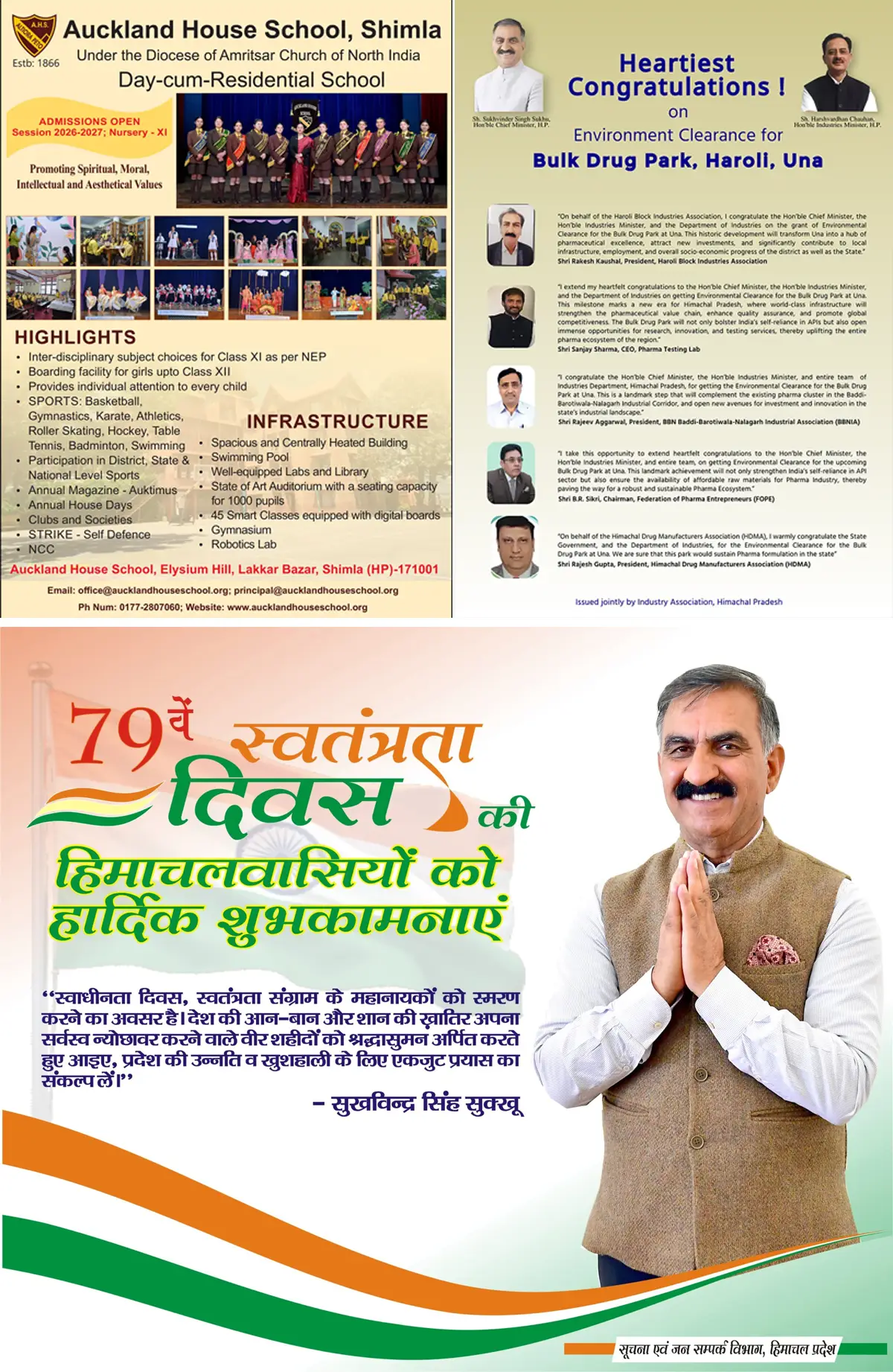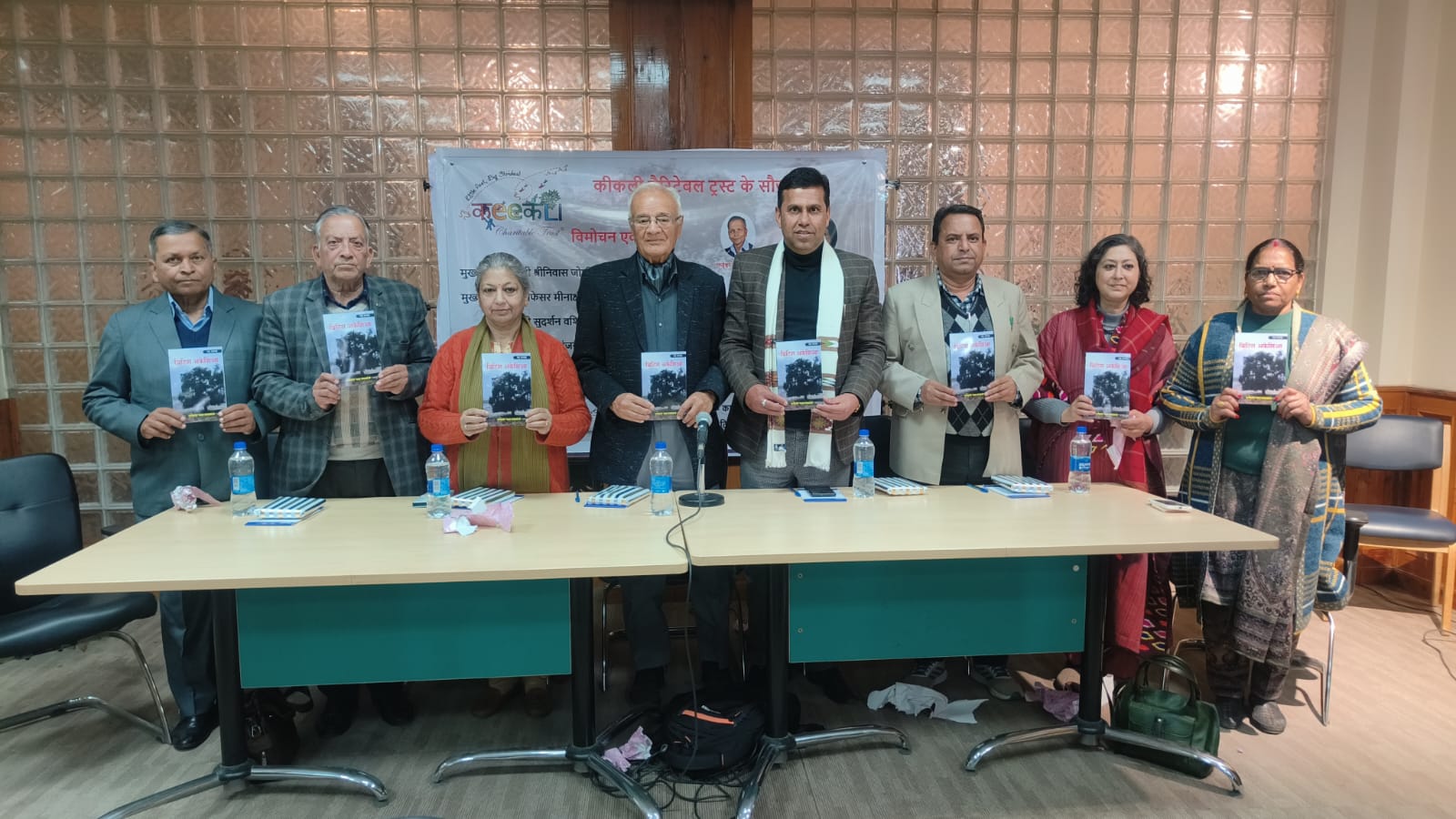Unveiling Chaos: Shimla’s Environmental Crisis – Natural Beauty vs. Concrete Jungle
3 min read
suggestive image
Shimla, Aug 24 Vandana Bhagra
A drastic shift in the seasons has swept over Himachal Pradesh, particularly the hill station of Shimla, casting a shadow over its natural beauty and harmony. The usual cycle of spring, summer, autumn, and winter has been disrupted, with soaring temperatures during winter months and torrential rains invading the summer season. The once-predictable climate has been hijacked by environmental and climatic changes, wreaking havoc in the region and neighboring northern parts of the country. The media is awash with accounts of relentless rainfall, floods, and devastating damage, both to property and human life.
Initially, the outskirts of Shimla and the highways were primarily affected by the shifting weather patterns. Landslides were a common concern, often attributed to the aggressive road widening initiatives. However, in recent weeks, heavy rains and cloud bursts have intensified, causing widespread damage within the city itself. Tragedies unfolded as a Shiva Temple was washed away in Summerhill during morning prayers, and multiple buildings crumbled in the Krishna Nagar colony.
The cracks in buildings, falling trees, eroding roads, and shifting land all foretell of impending disasters that could befall this once-idyllic hill station. Evacuations for safety reasons are underway, and each night brings trepidation as people await the morning news of more losses, within the city or across the state, all while waiting for the rains to subside.
Amidst this devastation, a pressing question emerges: Is this destruction solely a result of the rains, or does human greed play a significant role? Social media platforms and WhatsApp groups have sprung to life as voices that might have previously disregarded building norms now resonate with concern. However, this wave of activism comes somewhat late, raising the question: Could more have been done earlier?
A thought-provoking sentiment circulates on social media: “But what can I do, I am just one person, said 7 billion people.” It’s a sentiment worth contemplating. While it’s easy to feel overwhelmed by the scale of the challenge, the question remains whether collective action can truly make a difference.
One of the focal points of concern is the rampant construction of iron pathways across the city. The city’s landscapes and forests, once the main attractions, are being encroached upon by concrete and iron structures in the name of development. Many are questioning the need for these changes. Would people walk the stairs instead of opting for escalators? Were these structures really necessary, and do they serve any real purpose?
The current state of affairs raises questions about the government’s appeasement policy and whether the city has become merely a vote bank. Many wonder if elected officials only seek favor once in office. The concern shifts to whether the increasing iron and concrete structures in the name of development align with the city’s unique charm and heritage.
Former IAS officer Dr. Purnima Chauhan emphasizes that Shimla’s evolution has been haphazard, lacking consideration for the city’s natural carrying capacity. Greed, she notes, is eroding the city’s unique character and heritage. In the race for development, basic civic amenities like water, electricity, sewage disposal, and garbage collection have taken a back seat.
As Shimla grapples with the consequences of these decisions, residents and observers urge for a reevaluation of priorities. They stress the need for governance that values the city’s essence and heritage and calls for adherence to building norms. The mountains are sending a clear message: It’s time to rethink the definition of a “smart” city and work collectively to restore Shimla’s glory before it’s too late.







1 thought on “Unveiling Chaos: Shimla’s Environmental Crisis – Natural Beauty vs. Concrete Jungle”